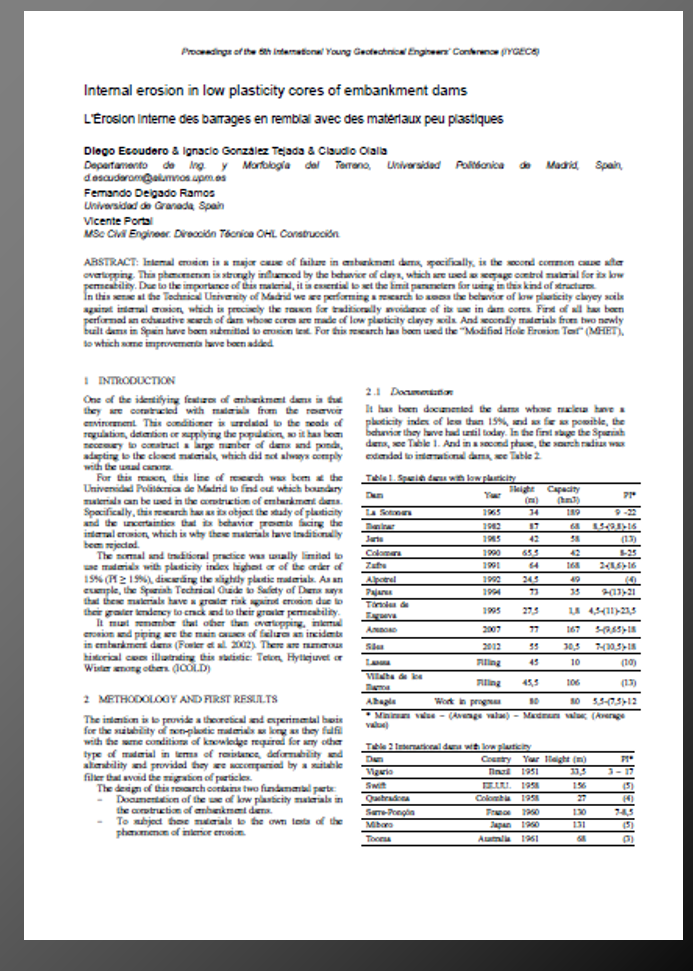6th International Young Geotechnical Engineers Conference (iYGEC6)
Seúl (Corea), 16-17 septiembre 2017
ÍNDICE DE ARTÍCULOS:
1.- Internal erosion in low plasticity cores of embankment dams (Diego Escudero & Ignacio González Tejada & Claudio Olalla)
2.- Micro-hydromechanical modeling of piping erosion processes (Ignacio González Tejada & Diego Escudero & Claudio Olalla)
1.- «Internal erosion in low plasticity cores of embankment dams»
Autores: Diego Escudero & Ignacio González Tejada & Claudio Olalla
Resumen: Internal erosion is a major cause of failure in embankment dams, specifically, is the second common cause after overtopping. This phenomenon is strongly influenced by the behavior of clays, which are used as seepage control material for its low permeability. Due to the importance of this material, it is essential to set the limit parameters for using in this kind of structures.
In this sense at the Technical University of Madrid we are performing a research to assess the behavior of low plasticity clayey soils against internal erosion, which is precisely the reason for traditionally avoidance of its use in dam cores. First of all has been performed an exhaustive search of dam whose cores are made of low plasticity clayey soils. And secondly materials from two newly built dams in Spain have been submitted to erosion test. For this research has been used the “Modified Hole Erosion Test” (MHET), to which some improvements have been added.
DESCARGAR ARTÍCULO (Solo para socios)
2.- «Micro-hydromechanical modeling of piping erosion processes».
Autores: Ignacio González Tejada & Diego Escudero & Claudio Olalla
Resumen: Internal erosion is the process in which water seepage causes the migration of the finest fraction of a soil. Piping erosion happens when a continuous pipe appears in the soil. As the water flows, the pipe evolves when the shear stress on its boundaries is enough to make some aggregates to be detached from the soil matrix. Understanding the factors that control this localized migration of particles is essential in predicting the contingency of internal erosion of embankments. The Hole Erosion Test (HET) is used to study piping erosion of soils with a clay matrix in the laboratory. This experimental device gives the eroded mass versus time under given hydraulic gradient conditions. With a numerical micro-hydromechanical method we investigate, in conditions similar to those of the HET, the role played by the micromechanical features of the soil in the erosion process. In particular, we pay attention to how the structure of a cohesive granular material determines its erosion resistance, represented by the critical shear stress. The numerical method is based on a coupling between the discrete element and the Lattice Boltzmann methods.


